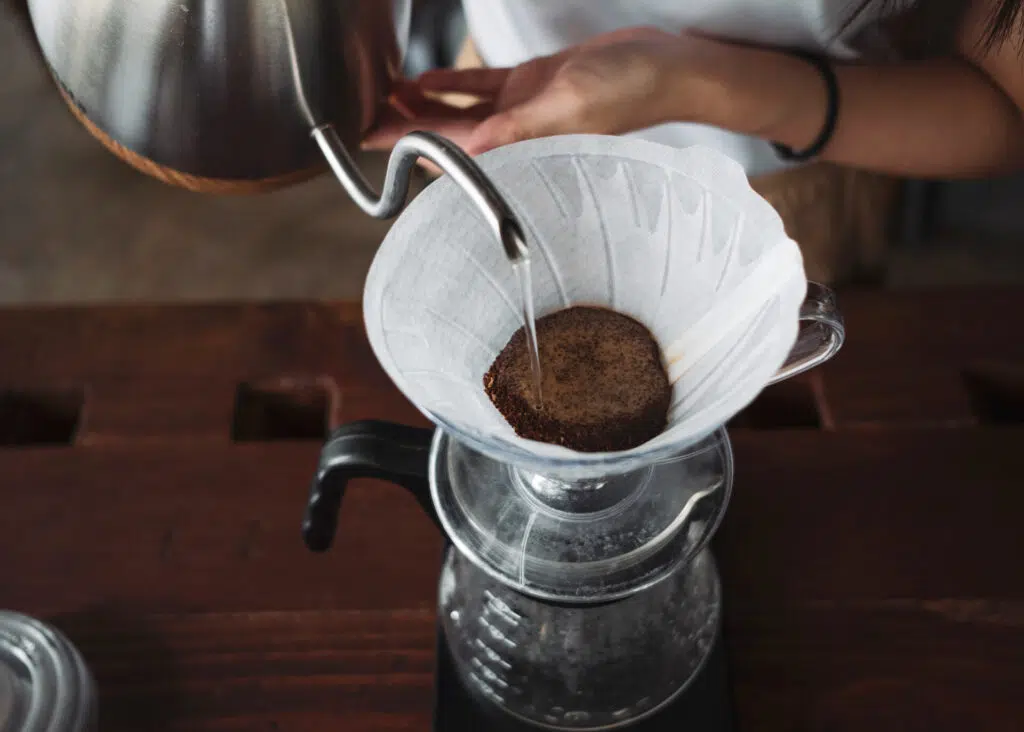Espresso is the basis of many excellent coffee drinks. But an espresso machine can be expensive and take up a lot of counter space. So you may consider compensating for lacking the right brewing equipment using another method, like pour-over. Read on to find out how you can make pour-over espresso at home!
Can you make espresso using a pour-over?
You might think you can replace an espresso machine with a pour-over coffee maker. After all, both use hot water, dripped through a filter, to extract coffee oils and flavor compounds from the coffee beans. So they should end up similar, right?
Well, you technically can’t make an espresso in a pour-over. That’s because an espresso shot is defined entirely by its extraction process.
An espresso machine forces a pressurized, scalding water stream through a tightly packed puck of finely ground coffee. This combination results in a small amount of coffee (one ounce) with golden foam called crema on top.
Pour-over coffee brewers such as Chemex, Hario V60, or Kalita Wave don’t use pressure to extract coffee, so they can’t produce real espresso. As a result, coffee brewed using any pour-over dripper does not have the crema and thickness perfect espresso is renowned for.
However, any pour-over device can produce strong coffee and give you a good caffeine kick even if you don’t have access to an espresso machine. So let’s find out how to make the best pour-over espresso at home to satisfy your craving.
What type of coffee is best for pour-over espresso?
You often hear that you need espresso coffee beans to make a proper shot of espresso, but that’s not entirely true. There are no special espresso beans — espresso is made with the same coffee beans as every other coffee.
That said, the difference between espresso and regular coffee is in how the beans are prepared. Coffee producers usually roast beans for an espresso longer, resulting in a dark roast. In addition, the beans are ground to a finer consistency.
You can make strong coffee with any beans. However, specialty coffee beans for pour-over will produce a more enjoyable cup with complex aromas and flavors.
Country of origin, roasting level, and coarseness play the most significant role in your coffee taste. Let’s go over these qualities in order of scale.

Country of origin
The coffee growing conditions, like soil, climate, and altitude, affect the final taste of your cup of coffee. The best coffee beans for pour-over espresso are single-origin coffees. Hawaii and Guatemala produce exceptional coffee that is ideal for the pour-over method.
Despite having a relatively light flavor profile, Kona coffee from Hawaii’s Big Island has full body with intricate flavors. In addition, it has slightly sweet notes and fruity undertones. The pour-over brewing method lets these notes shine, even when making an espresso-life brew.
Coffee from Guatemala has a robust and rich flavor with hints of chocolate, brown sugar, and cinnamon. The pour-over brewing process brings out the best of the Guatemalan coffee beans.
Roast type
One wonderful thing about brewing your coffee at home is choosing the roast level. While coffee shops often prefer dark roast for espresso, you can make a pour-over espresso with any roast.
If you pick a medium or light roast, you can expect more caffeine in the prepared drink. Also, lighter roasts retain natural fruity and sweet coffee flavors.
To get a cup with espresso-like bitterness, opt for darker roasts. A longer roasting process results in a more intense coffee flavor. Dark roasted coffee beans (labeled as espresso roast) will let you enjoy coffee similar to what you get in coffee shops.

Grind size
The espresso grind size is usually fine to ensure proper coffee extraction during the short time water is in contact with the coffee. A finer grind creates a sufficient surface area, so the water extracts more of that coffee goodness.
To make a pour-over espresso, you will also want a finer grind than usual to compensate for the lack of high pressure. However, you shouldn’t grind the coffee too fine. This risks over-extraction and will result in an overly bitter drink. At the same time, if you grind coffee too coarse (which often happens when using alternative grinding methods), you’ll end up with weak and watery coffee.
Begin with medium-fine grind size and adjust the grinder settings as you experiment. Generally, finely ground coffee produces a more robust flavor, and a coarser grind makes a more mellow drink.
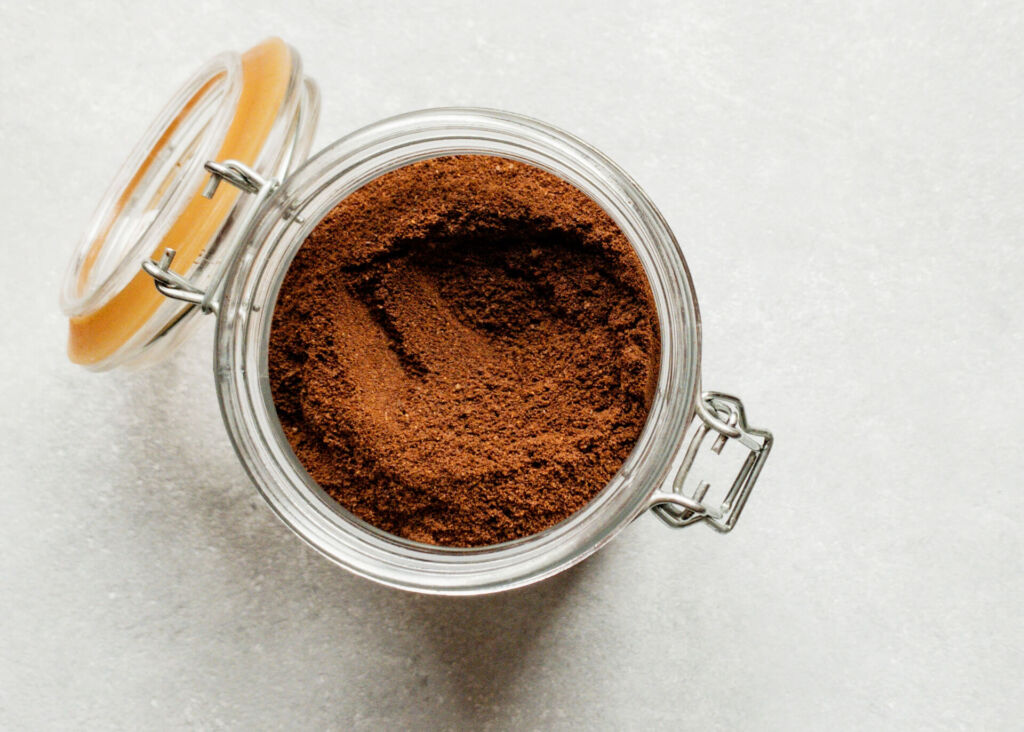
What equipment do you need to make pour-over espresso?
Are you itching to make a pour-over espresso? Then let’s get the equipment ready!
Pour-over dripper
First things first, you’ll need a pour-over brewing device. It doesn’t matter what brand dripper you have at home — any of them will do the job. But, of course, each will have slightly different design features, some requiring paper filters and others working on their own.
Filter
If your pour-over dripper doesn’t come with a filter, you’ll need to use one to prevent coffee grounds from getting into your mug.
Paper filters are typically the cheapest option. However, a paper filter could introduce a slight paper taste to your coffee, especially if the filter is not bleached. You can mitigate this problem by rinsing the filter paper before using it.
Some well-known coffee equipment brands make paper filters optimized for pour-over coffee preparation. For example, Chemex filters are up to 30% thicker than others to keep bitter oils out of your coffee. These filters are usually more expensive than the generic ones you can get in supermarkets, but you can rest easy knowing that they’ll fit your brewer perfectly.
A great alternative to disposable paper filters is cloth filters. They won’t affect the coffee flavor. As a bonus, they are washable and reusable, allowing you to save money and reduce waste.
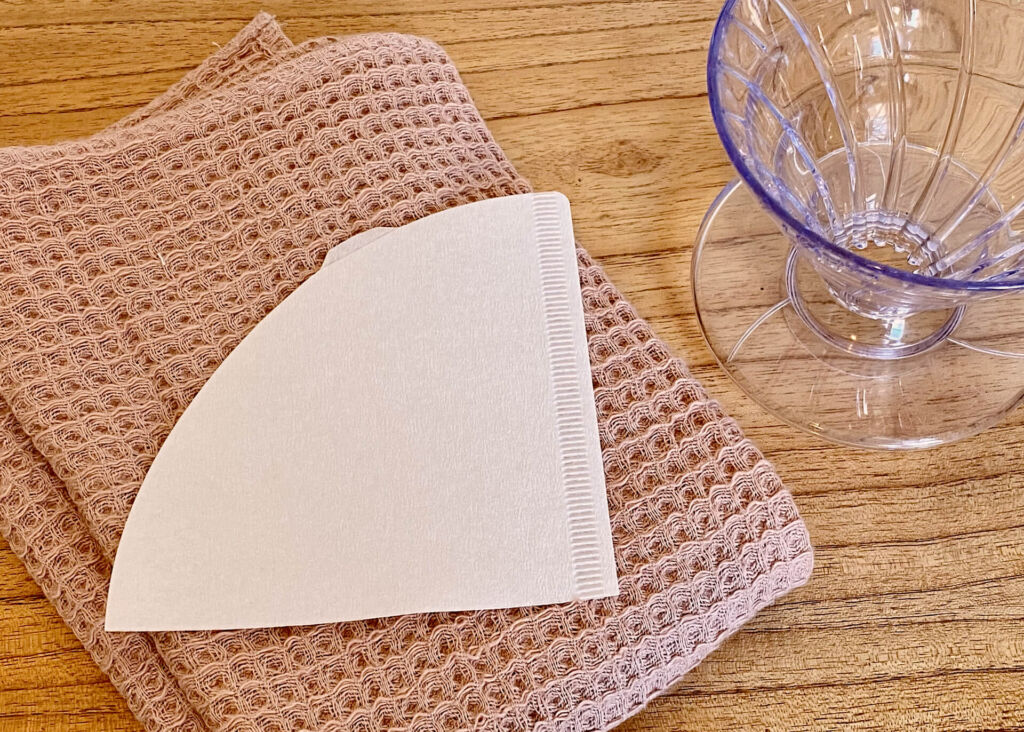
Coffee scale
You can make pour-over coffee without scale. Instead, use a spoon or a cup to measure coffee. However, digital scales will come in handy and eliminate human error if you want consistent results every time.
You can use a generic kitchen scale if you don’t own a digital coffee scale. But make sure it can measure very light weights as you’ll need only a few ounces of coffee.
Kettle
You may have seen professional baristas using gooseneck kettles to brew pour-over coffee. Electric gooseneck kettles are especially convenient as they keep water at a stable temperature to ensure brewing consistency. However, hot water poured slowly over the ground coffee matters the most, and you can achieve that with almost any kettle.
Of course, a gooseneck kettle is a great investment if you want to step up your coffee brewing game. A long, thin spout will allow you to pour water slowly to ensure a perfect extraction.
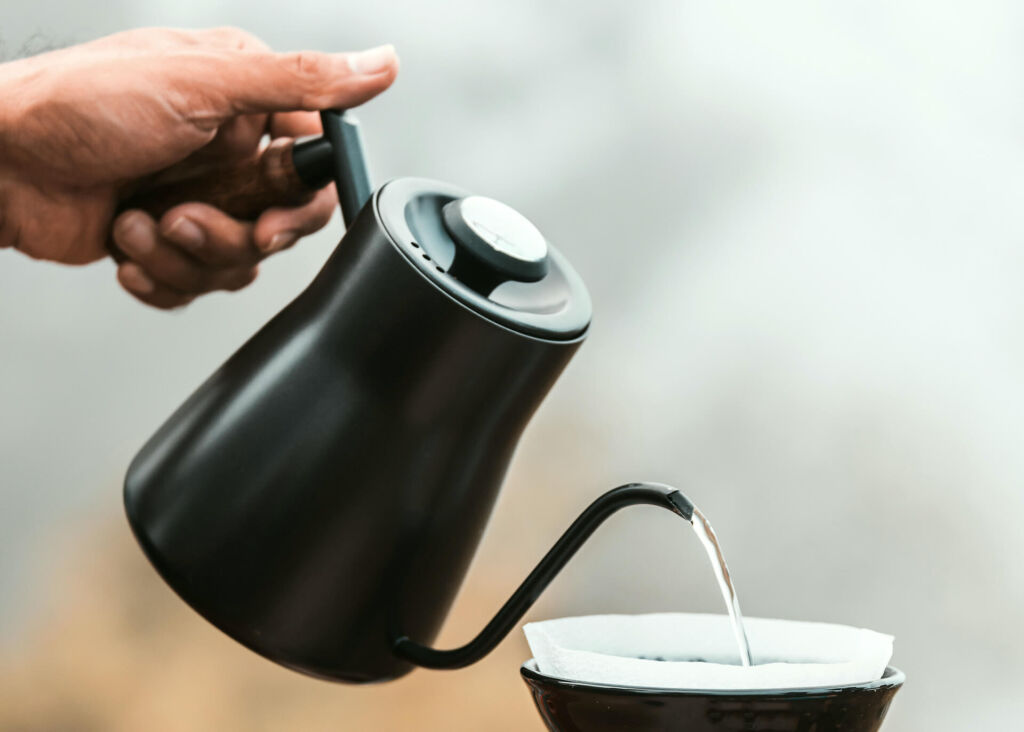
How to make strong coffee with a pour-over dripper
Now that you know what it takes to make a strong coffee with a pour-over brewer, it’s time to put this knowledge to practice! Even if you don’t have a coffee scale or a gooseneck kettle, as long as you have a dripper, you can still make a pour-over espresso at home.
Simple Pour-Over Espresso Recipe
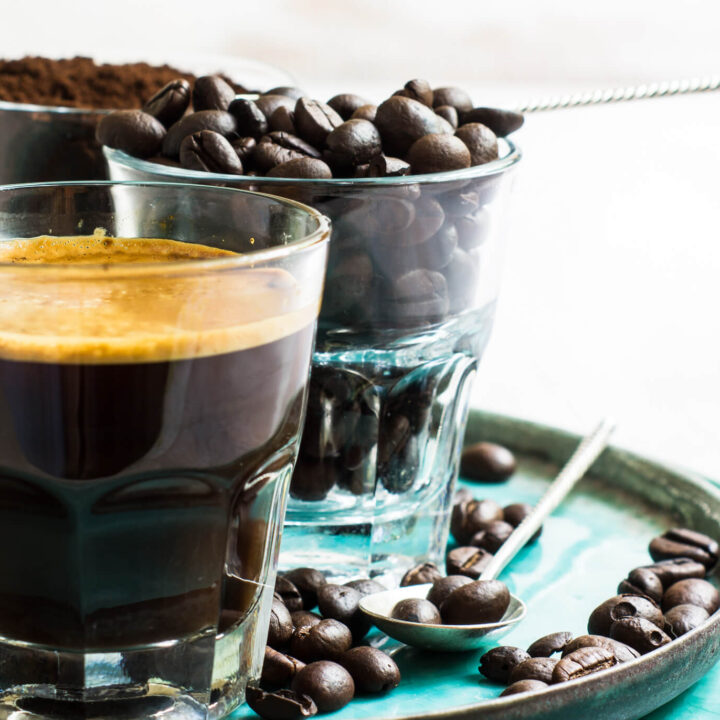
Follow this simple recipe to enjoy a deliciously strong cup of coffee. This recipe was created with a Hario V60 dripper, but you can use any pour-over coffee brewer you have handy.
Ingredients
- 2 tablespoons (9 g) ground coffee
- 3 oz (90 ml) filtered water
Instructions
- Fill the kettle with water and set it to boil.
- Fold the flat edge of the paper filter and place it in the brewer.
- Set the brewer on top of your cup.
- Once your water boils, take it off the heat and wait a few seconds for it to cool.
- Pre-wet the paper filter. Discard the water that dripped into the cup.
- Add ground coffee to the brewer.
- Pour a small amount of water to saturate the coffee grounds evenly. Allow it to absorb for about 30 seconds.
- Slowly pour the rest of the water, starting in the middle and moving toward the edges.
- Wait for the dripper to drain all the coffee.
- Enjoy the pour-over espresso on its own, or use it to make a latte or cappuccino.
Recommended Products
As an Amazon Associate and member of other affiliate programs, I earn from qualifying purchases.
Pour-over espresso brewing tips
The basic process of making pour-over coffee is pretty simple, and you can keep improving your brewing technique. However, knowing some brewing tricks will help you perfect your pour-over espresso in no time.
Measure the coffee-to-water ratio
When using an espresso machine, a coffee-to-water ratio is 1:2. But that would not work with an infusion-based pour-over method as no pressure is involved, and coffee seeps through the grinds slower.
While the Hario V60 pour-over recipe suggests around a 1:15 to 1:16 coffee-to-water ratio, you need to decrease the amount of water for pour-over espresso. Aim for a 1:9 or 1:10 ratio, depending on how strong you want your coffee.
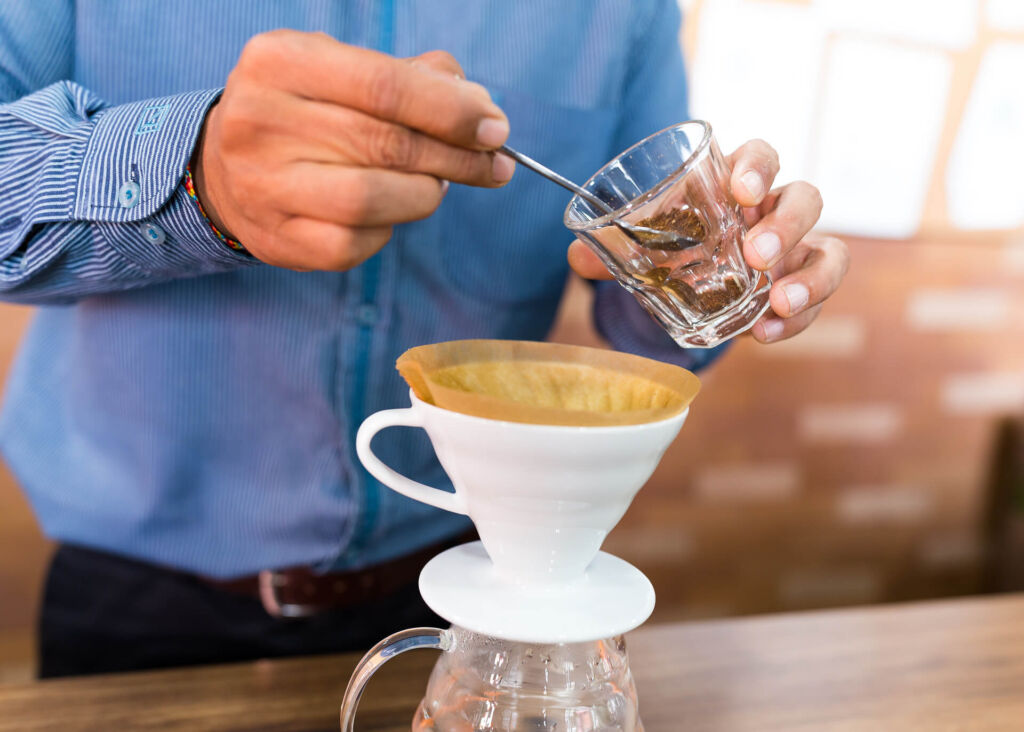
Invest in your tools
If you plan to make pour-over espresso regularly, investing in a burr grinder, a scale, and a gooseneck kettle is a good idea. Quality brewing equipment will help you control the process and achieve consistent results.
Bloom the coffee
Blooming is the part of the coffee brewing process when a small amount of water is poured over the grinds. It helps to release natural coffee gasses and ensures more even extraction. The water will be able to flow through the coffee grinds more smoothly, bringing out the best flavors.
Practice your pouring technique
Use a slow circular motion to pour the water over the grinds. This keeps the coffee evenly immersed and helps extract more coffee flavor. Use a timer to control your coffee extraction. The total brew time should be 3–4 minutes.
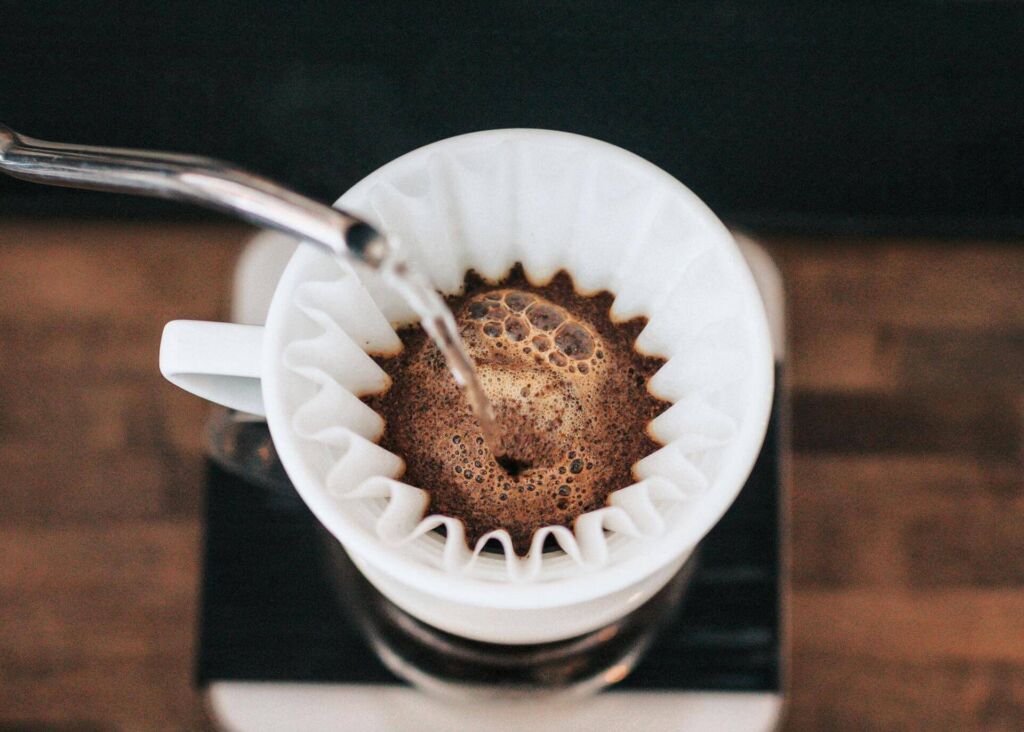
Get the water temperature right
After your water has hit boiling point, take it off the heat and let it sit for about 30 seconds to lower the temperature. The desired temperature for pour-over espresso is around 200°F (93°C).
Take note of your coffee recipe
Producing a pour-over espresso may require trial and error. Once you achieve the desired result, note the recipe you used: the grind size and water-to-coffee ratio. This way, you won’t forget the details.
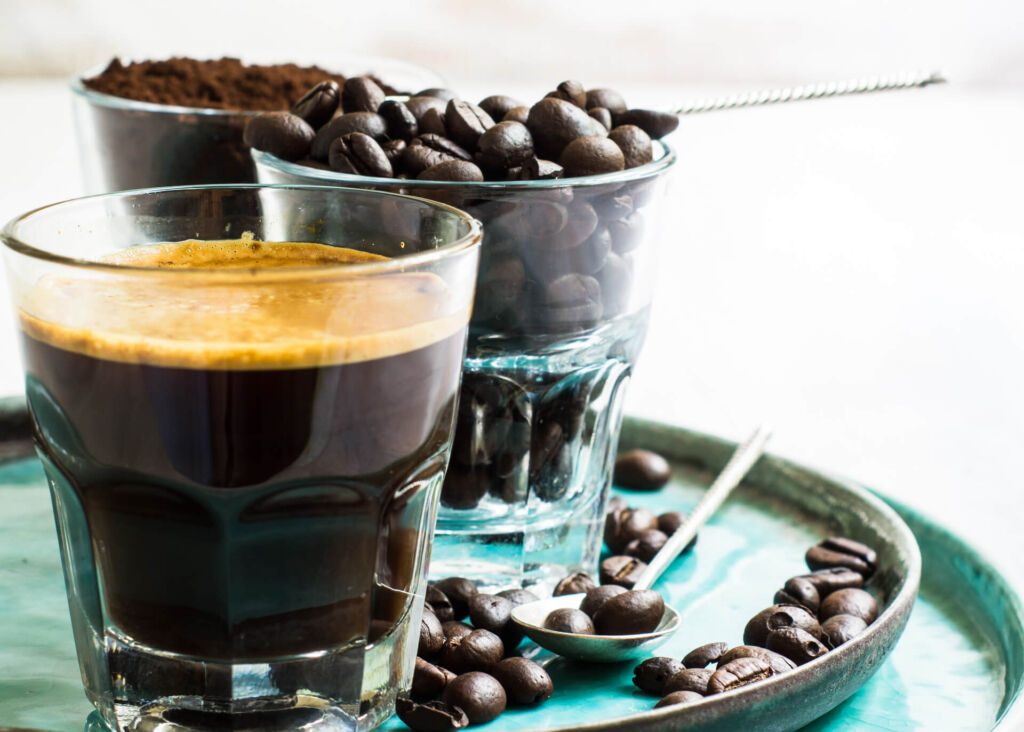
Make a larger quantity of coffee
Considering the effort of making pour-over coffee, producing a couple of ounces seems like a waste. So instead, make some extra concentrated coffee and store it in the fridge to use in cold coffee recipes, like iced lattes.
Keep your equipment clean
Washing your coffee dripper every time after brewing coffee will ensure it is not stained with coffee residues or oils that could introduce off-flavors to your drink. Thorough cleaning is essential with a metal coffee filter as it has micropores that can get easily clogged.
Just like cleaning a French press or Moka Pot, rinse a pour-over dripper under running water using a soft sponge and mild soap. It will ensure the longevity of your coffee maker and consistent brew every time.
There is no clear winner in the battle of traditional espresso vs. pour-over as they are different brewing methods. However, if you are stuck with only a dripper and craving strong coffee, give pour-over espresso a try!

